Publisher: Amy Marson Creative Director: Gailen Runge Acquisitions Editor: Roxane Cerda Managing Editor: Liz Aneloski Editors: Katie Van Amburg and Liz Aneloski Technical Editor: Helen Frost Cover/Book Designer: April Mostek Production Coordinator: Tim Manibusan Production Editor: Alice Mace Nakanishi Illustrator: Cinzia White Photo Assistant: Rachel Holmes Photography by Kelly Burgoyne of C&T Publishing, Inc., unless otherwise noted Published by C&T Publishing, Inc., P.O. Box 1456, Lafayette, CA 94549  Dedication This book is dedicated to Paul, my husband, who has always given his encouragement through all of my endeavors. Without his support, my quilt RaconteurThe Storytellers Collection would never have been finished and this book never started. To Paul-James and Richard, who, when young, helped to find lost pins and needles with their feet and now help to find lost files or fix frustrating software and computer problems. I love you always.
Dedication This book is dedicated to Paul, my husband, who has always given his encouragement through all of my endeavors. Without his support, my quilt RaconteurThe Storytellers Collection would never have been finished and this book never started. To Paul-James and Richard, who, when young, helped to find lost pins and needles with their feet and now help to find lost files or fix frustrating software and computer problems. I love you always. 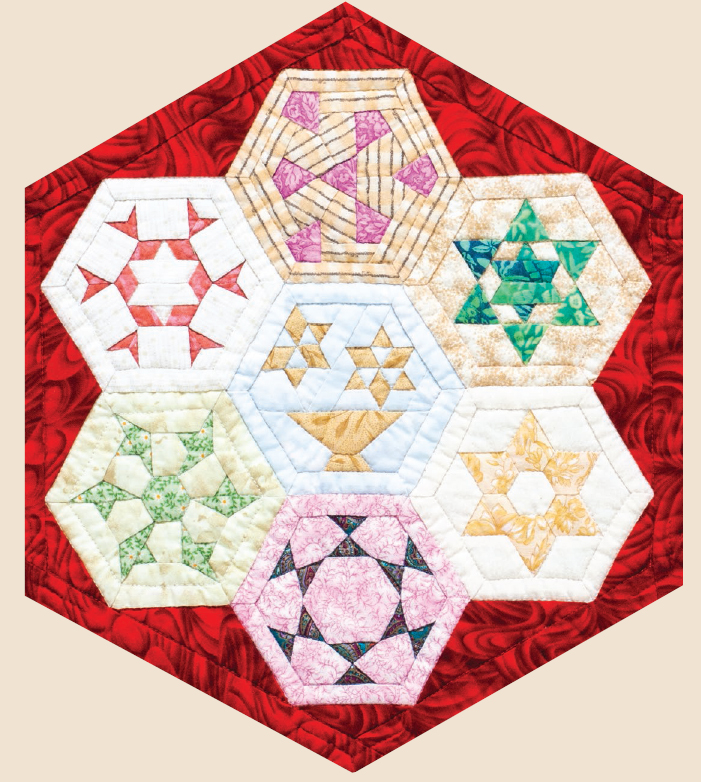 Acknowledgments Many thanks go to all who contributed to the making of The Storytellers Sampler Quilt.
Acknowledgments Many thanks go to all who contributed to the making of The Storytellers Sampler Quilt.
Special thanks go to Tim Manibusan and Linda Johnson for their patience and directions as I mastered the skills needed for presenting the diagrams; Roxane Cerda, Helen Frost, and Liz Aneloski, who encouraged and directed me throughout the entire process; and Alice Mace Nakanishi and the whole team at C&T for bringing my dream to fruition. Introduction Having quilted for almost 30 years, I have reached a stage where I need to make quilts more than I need quilts, and it is to fulfill this need that I ventured into miniature quilt blocks. The RaconteurThe Storytellers Collection quilt was designed as a take-anywhere project that I hoped would take me a while to finish. A block can take anywhere from one hour to one day to completebut it is always fun. The quilt title, RaconteurThe Storytellers Collection, came about while I was working on designing new hexagonal blocks. When it came to naming the blocks, I started seeing in them significant people, places, and events that had shaped my life during the many years of the project.
As I pieced the blocks and collections, the quilt became a story of my life and the people in it. An explanation of the names may be found on my website. Peoples reactions to the finished blocks are delightful. Raconteur was planned so that when it was first seen from a distance, the viewer would see the Grandmothers Flower Garden arrangement, obvious through the dark-colored outer frames, with something glittering inside each one. As they approached, more details appeared until, standing directly before it, they could see the tiny individual pieces. Through the use of a subtle contrasting color of quilting thread, even the view from the back changes and reveals more as one approaches.
There is still no consensus on how many pieces are in the quilt. I calculated 13,937 while my husband, Paul, counted 14,084, and neither of us is willing to recount. The quickest block has just six pieces while the slowest to make has 147 pieces all within a 2 hexagon. Although I hand pieced more than 300 blocks, some of these are presented here as foundation piecing to speed up the process. Choose the method you prefer and have fun. Completing the Collections offers guidance about the different types of collections, adding borders, and adding fillers; it also contains patterns for those pieces. Collections, which makes up the bulk of the book, contains instructions, illustrations, and full-size patterns for every block in the quilts collections. Completing the Quilt provides quilting instructions and some quilting designs. The Gallery shows some other ways to use the blocks in this book. The Gallery shows some other ways to use the blocks in this book.
General Information Finished quilt: 95 112 Finished block: Edge length 2 Finished collection: Edge length 7 Use the quilt photo (below) and quilt layout diagram to match each collection with its number. The instructions and patterns for each collections blocks are in Collections.  RaconteurThe Storytellers Collection by Cinzia White TERMINOLOGY
RaconteurThe Storytellers Collection by Cinzia White TERMINOLOGY  Block with mitered border
Block with mitered border 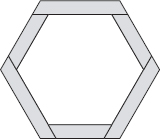 Block with long-short borders
Block with long-short borders  Extended hexagon with border
Extended hexagon with border 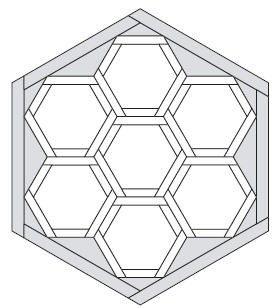 Frame Block Individual miniature hexagon Border Small strips surrounding each block, made from the same light fabric as the block Full collection Set of 7 blocks joined together and framed to make a complete unit Side collection Set of 4 blocks joined together and framed to make a complete unit Corner collection Set of 3 blocks joined together and framed to make a complete unit Frame Triangles and strips surrounding each collection QAYG (quilt-as-you-go) Process in which each framed collection is quilted before being joined to the neighboring collections or borders SUPPLIES AND TOOLS Freezer paper (such as Quilters Freezer Paper Sheets by C&T Publishing) Template plastic (such as Visi-GRID Quilters Template Sheets by C&T Publishing) Foundation paper (such as Carol Doaks Foundation Paper by C&T Publishing) Lightweight fusible stabilizerLightweight paper for quilting designs (such as Golden Threads Quilting Paper) Fabric scissorsCraft scissorsRulerRotary cutting toolsAdd-A-Quarter and Add-An-Eighth rulers (by CM Designs) Fine-tip permanent markers (such as Pigma for fabric and Sharpie for template plastic) Mechanical pencilSandpaperSmall resealable plastic bagsIron and ironing boardStoring in Resealable Plastic Bags Small resealable plastic bags are perfect for storage, especially because you may want to cut a number of blocks in one sitting after making the first one or two blocks. FABRICS Choose 100%cotton, as it handles well and is easy to finger press. Large-scale prints are seldom suitable due to the miniature size of the blocks. To minimize color run, prewash and press your fabric.
Frame Block Individual miniature hexagon Border Small strips surrounding each block, made from the same light fabric as the block Full collection Set of 7 blocks joined together and framed to make a complete unit Side collection Set of 4 blocks joined together and framed to make a complete unit Corner collection Set of 3 blocks joined together and framed to make a complete unit Frame Triangles and strips surrounding each collection QAYG (quilt-as-you-go) Process in which each framed collection is quilted before being joined to the neighboring collections or borders SUPPLIES AND TOOLS Freezer paper (such as Quilters Freezer Paper Sheets by C&T Publishing) Template plastic (such as Visi-GRID Quilters Template Sheets by C&T Publishing) Foundation paper (such as Carol Doaks Foundation Paper by C&T Publishing) Lightweight fusible stabilizerLightweight paper for quilting designs (such as Golden Threads Quilting Paper) Fabric scissorsCraft scissorsRulerRotary cutting toolsAdd-A-Quarter and Add-An-Eighth rulers (by CM Designs) Fine-tip permanent markers (such as Pigma for fabric and Sharpie for template plastic) Mechanical pencilSandpaperSmall resealable plastic bagsIron and ironing boardStoring in Resealable Plastic Bags Small resealable plastic bags are perfect for storage, especially because you may want to cut a number of blocks in one sitting after making the first one or two blocks. FABRICS Choose 100%cotton, as it handles well and is easy to finger press. Large-scale prints are seldom suitable due to the miniature size of the blocks. To minimize color run, prewash and press your fabric.
Requirements are based on 40-wide fabric. The seam allowance used throughout is included in the cutting measurements. Fabric quantities are approximate only; it is hard to describe or count the total number of prints chosen for this quilt. It is important that there is a contrast between the fabrics used in each block. Individual fabric amounts are not given for each block. 1 fat quarter of contrast fabric is sufficient for the dark of 3 blocks. 1 fat quarter of a dark-value fabric is sufficient for 3 collection frames. 1 fat quarter of a dark-value fabric is sufficient for 3 collection frames.
The quilt is finished using quilt-as-you-go, and this uses significantly more fabric than normal. Fabric Quantities Light- to light medium-value fabrics:
Next page
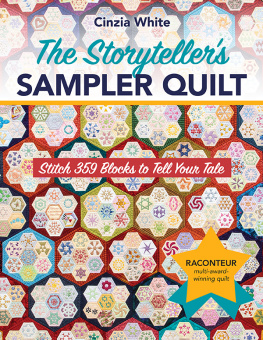
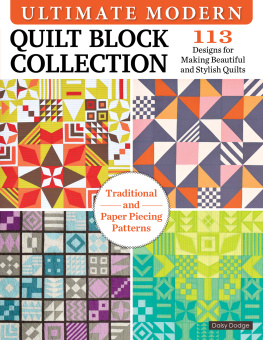
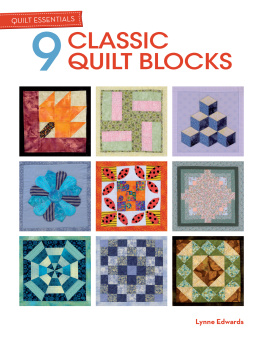



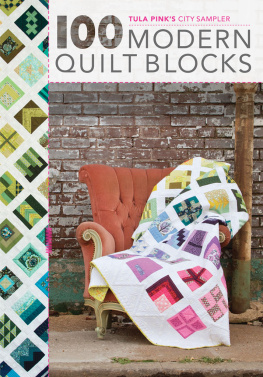
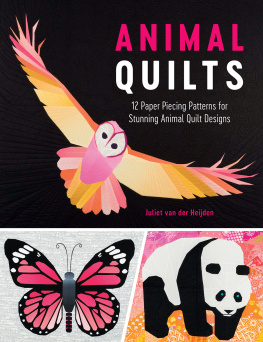
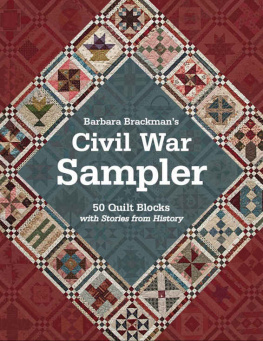

 Dedication This book is dedicated to Paul, my husband, who has always given his encouragement through all of my endeavors. Without his support, my quilt RaconteurThe Storytellers Collection would never have been finished and this book never started. To Paul-James and Richard, who, when young, helped to find lost pins and needles with their feet and now help to find lost files or fix frustrating software and computer problems. I love you always.
Dedication This book is dedicated to Paul, my husband, who has always given his encouragement through all of my endeavors. Without his support, my quilt RaconteurThe Storytellers Collection would never have been finished and this book never started. To Paul-James and Richard, who, when young, helped to find lost pins and needles with their feet and now help to find lost files or fix frustrating software and computer problems. I love you always.  Acknowledgments Many thanks go to all who contributed to the making of The Storytellers Sampler Quilt.
Acknowledgments Many thanks go to all who contributed to the making of The Storytellers Sampler Quilt. RaconteurThe Storytellers Collection by Cinzia White TERMINOLOGY
RaconteurThe Storytellers Collection by Cinzia White TERMINOLOGY  Block with mitered border
Block with mitered border  Block with long-short borders
Block with long-short borders  Extended hexagon with border
Extended hexagon with border  Frame Block Individual miniature hexagon Border Small strips surrounding each block, made from the same light fabric as the block Full collection Set of 7 blocks joined together and framed to make a complete unit Side collection Set of 4 blocks joined together and framed to make a complete unit Corner collection Set of 3 blocks joined together and framed to make a complete unit Frame Triangles and strips surrounding each collection QAYG (quilt-as-you-go) Process in which each framed collection is quilted before being joined to the neighboring collections or borders SUPPLIES AND TOOLS Freezer paper (such as Quilters Freezer Paper Sheets by C&T Publishing) Template plastic (such as Visi-GRID Quilters Template Sheets by C&T Publishing) Foundation paper (such as Carol Doaks Foundation Paper by C&T Publishing) Lightweight fusible stabilizerLightweight paper for quilting designs (such as Golden Threads Quilting Paper) Fabric scissorsCraft scissorsRulerRotary cutting toolsAdd-A-Quarter and Add-An-Eighth rulers (by CM Designs) Fine-tip permanent markers (such as Pigma for fabric and Sharpie for template plastic) Mechanical pencilSandpaperSmall resealable plastic bagsIron and ironing boardStoring in Resealable Plastic Bags Small resealable plastic bags are perfect for storage, especially because you may want to cut a number of blocks in one sitting after making the first one or two blocks. FABRICS Choose 100%cotton, as it handles well and is easy to finger press. Large-scale prints are seldom suitable due to the miniature size of the blocks. To minimize color run, prewash and press your fabric.
Frame Block Individual miniature hexagon Border Small strips surrounding each block, made from the same light fabric as the block Full collection Set of 7 blocks joined together and framed to make a complete unit Side collection Set of 4 blocks joined together and framed to make a complete unit Corner collection Set of 3 blocks joined together and framed to make a complete unit Frame Triangles and strips surrounding each collection QAYG (quilt-as-you-go) Process in which each framed collection is quilted before being joined to the neighboring collections or borders SUPPLIES AND TOOLS Freezer paper (such as Quilters Freezer Paper Sheets by C&T Publishing) Template plastic (such as Visi-GRID Quilters Template Sheets by C&T Publishing) Foundation paper (such as Carol Doaks Foundation Paper by C&T Publishing) Lightweight fusible stabilizerLightweight paper for quilting designs (such as Golden Threads Quilting Paper) Fabric scissorsCraft scissorsRulerRotary cutting toolsAdd-A-Quarter and Add-An-Eighth rulers (by CM Designs) Fine-tip permanent markers (such as Pigma for fabric and Sharpie for template plastic) Mechanical pencilSandpaperSmall resealable plastic bagsIron and ironing boardStoring in Resealable Plastic Bags Small resealable plastic bags are perfect for storage, especially because you may want to cut a number of blocks in one sitting after making the first one or two blocks. FABRICS Choose 100%cotton, as it handles well and is easy to finger press. Large-scale prints are seldom suitable due to the miniature size of the blocks. To minimize color run, prewash and press your fabric.